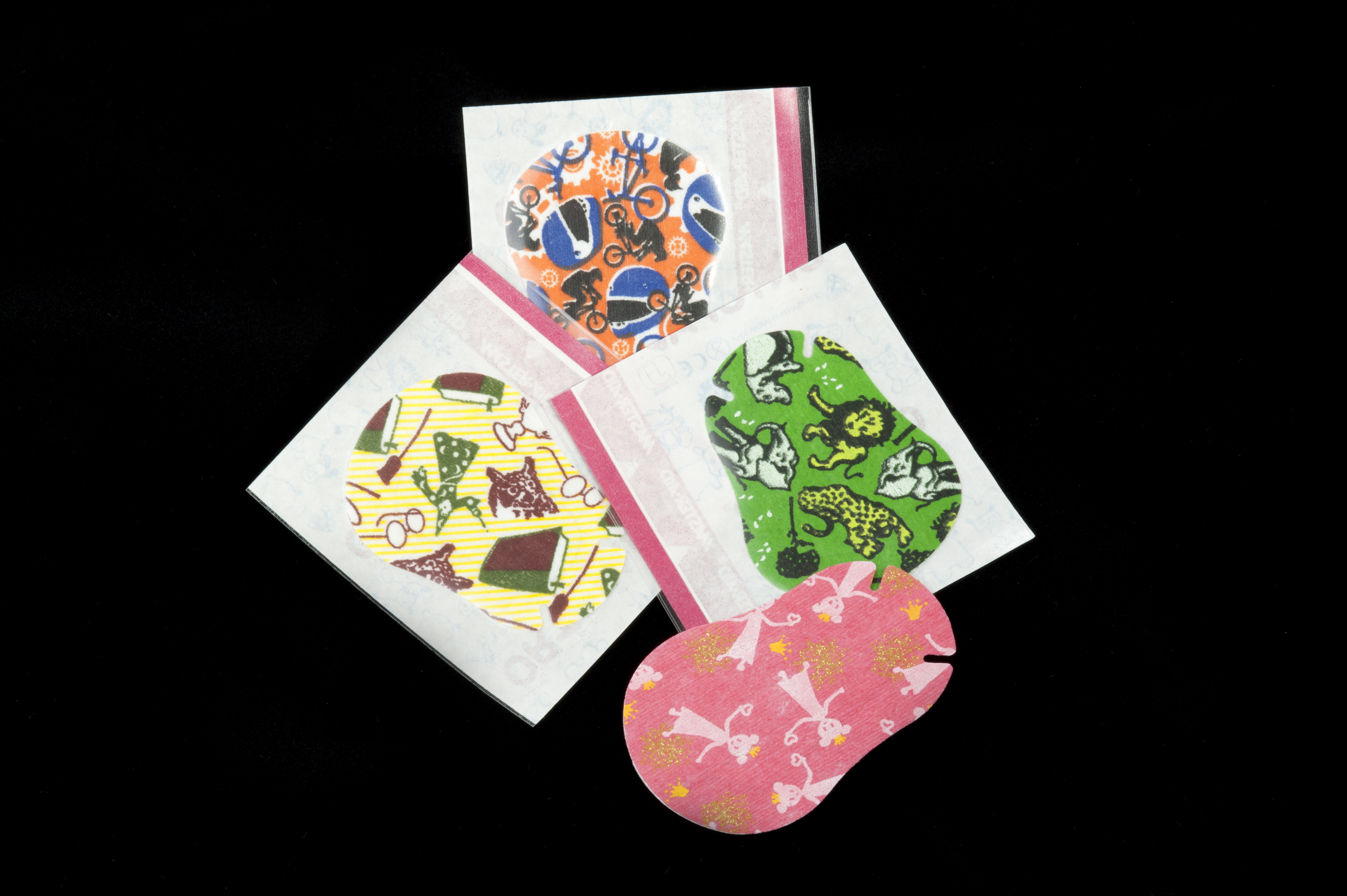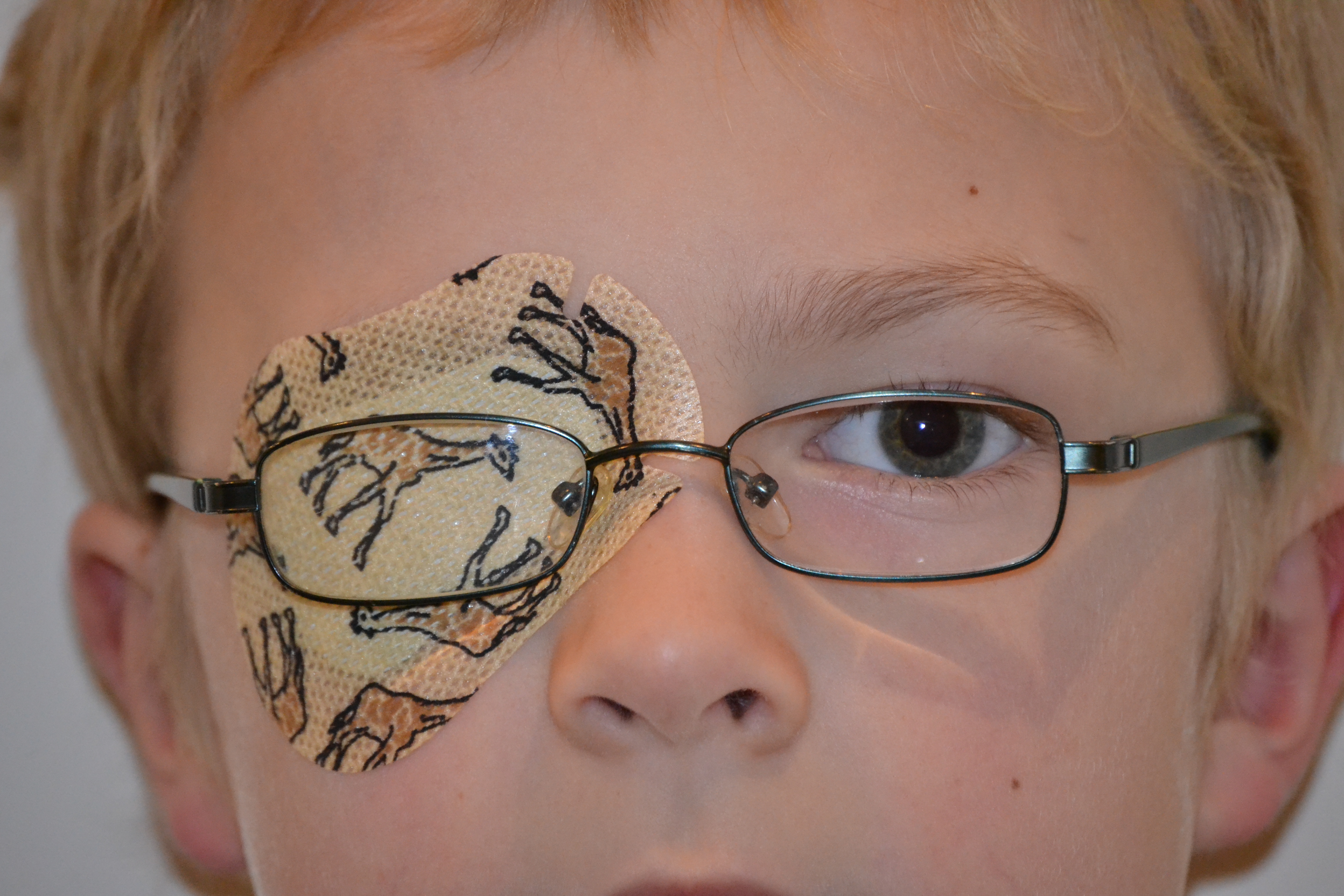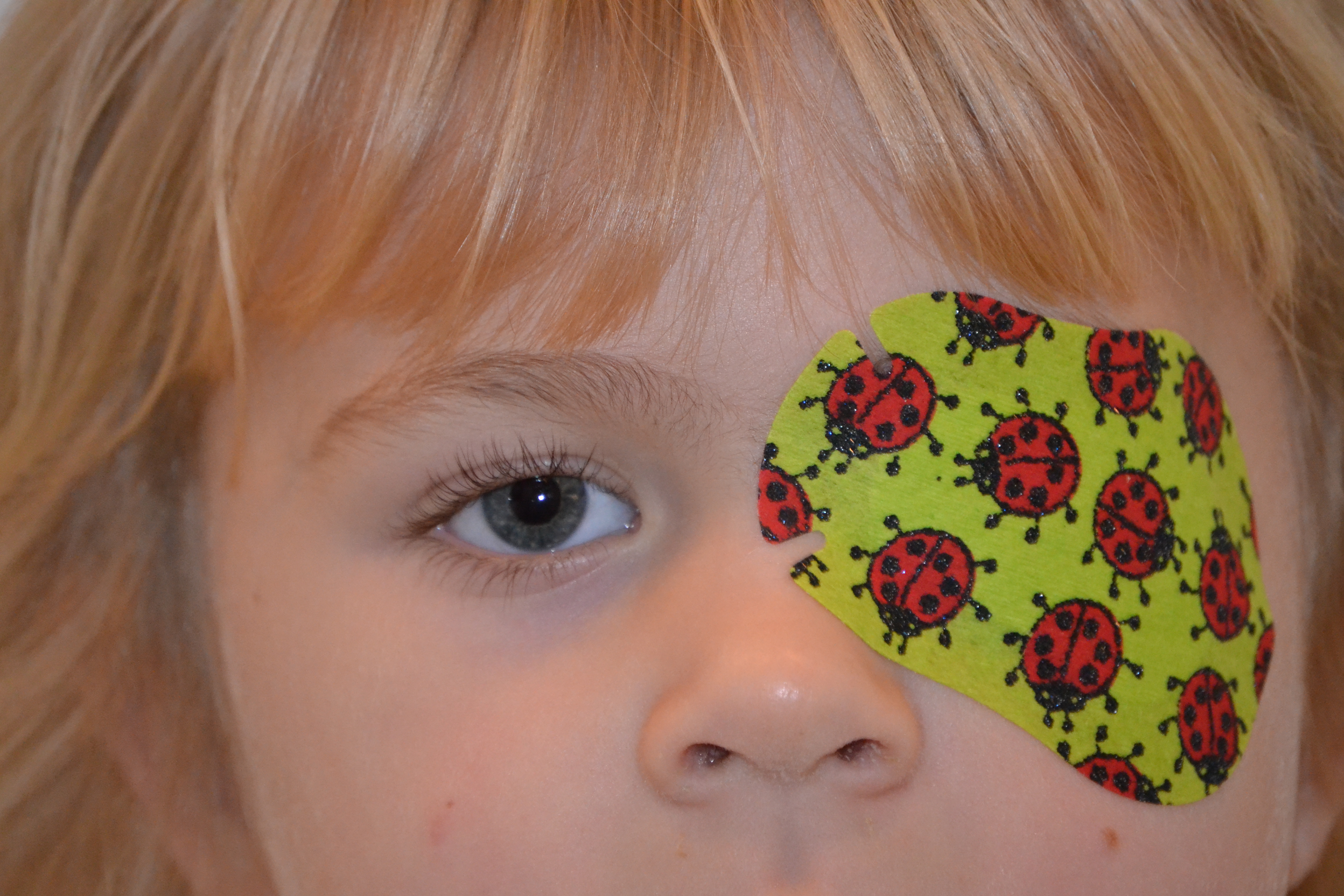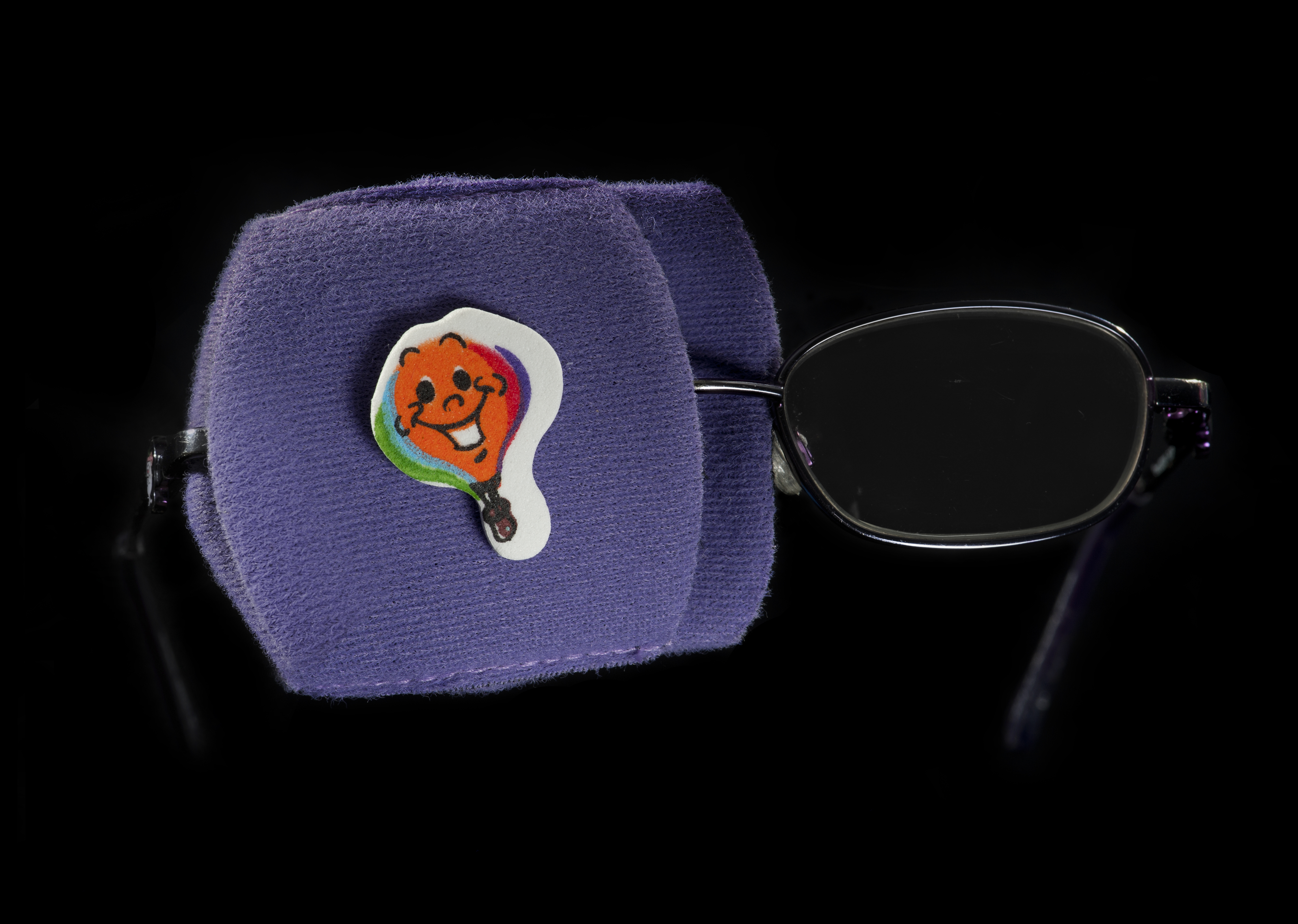Amblyopia (lazy eye)
Information for parents from the Orthoptic Department
Your child has been diagnosed with amblyopia (a lazy eye), that needs treatment to improve the vision of that eye. This leaflet explains:
what amblyopia (lazy eye) is
what happens if it's not treated, and
what the treatment options are.
If you have any questions after reading this leaflet, please speak to your orthoptist.
What is amblyopia (lazy eye)?
A lazy eye is where the vision in one eye is lower than the other eye. This is due to an interruption of normal visual development in early childhood’s “critical period”. The sight cannot be improved with glasses alone and the nerve at the back of the eye appears to be healthy.
Parents are often shocked to hear that there is a problem with their child’s sight. Especially when their child has apparently been seeing well, as they may have been relying on their good eye.
How can amblyopia develop?
A squint may cause the reduction in your child's sight. A squint is when one eye looks inwards, outwards, up, or down. For more information on squints, please read the Trust's Strabismus (squint) explained leaflet.
Double vision is inevitable when eyes are pointing in two different directions. To avoid this, when both eyes are open the brain ignores the signals from the squinting eye and only sees images from the normal eye.
Amblyopia can also be caused by unequal amounts of long- or short-sight (the glasses’ lens of one eye needing to be stronger than the other). This is also known as anisometropic refractive error.
The brain of a young child can quickly “switch off” unwanted information. This could be:
a second image, which appears when a squint develops, or
a blurred image if one eye needs a stronger lens than the other.
The vision in the “switched off” eye becomes lazy.
Fortunately, the vision can usually be regained. There is more chance of this working if the problem is found and treated during the critical period of their visual development. This is usually up to eight years of age, with the most sensitive time being under five years.
What happens if the amblyopia is not treated?
If left untreated, the sight of the lazy eye can drop to a very low level. However, the eye will not go blind because of amblyopia.
What happens when we arrive at hospital?
Report to the Outpatient reception desk. The receptionist will direct you to the Orthoptic Department, where your child will be assessed.
During your appointment the orthoptist will check your child’s vision. If your child has prescription glasses they will need to wear them for this assessment. You will be with your child the whole time.
What is the treatment?
Eye patching or occlusion of the “good” eye is the normal treatment for amblyopia. Your child's brain is forced to “look” with their lazy eye and their vision will improve. Occlusion is the term for patching.
Your child will need to have a refraction examination. This is a test for glasses following the instillation of drops. For more information, please read the Trust's Glasses and testing for glasses (hospital refraction) leaflet.
Your child must wear any prescription glasses full time. This may help their vision to improve before the decision is made to start patching. It is important to understand that patching will only improve vision, it will not straighten a squint.
How is the patch worn?
Your orthoptist will give you a supply of patches designed for young children. Examples of available patches are shown below.
The patches are applied directly to your child's face, and any glasses must be worn at the same time. If your child develops a bad reaction to their patch, you must contact the Orthoptic Department. They will be able to tell you of any available alternatives.
Patches available to children
-
 Examples of the different available patches
Examples of the different available patches -
 An example of a patch being worn with glasses
An example of a patch being worn with glasses -
 An example of a patch being worn without glasses
An example of a patch being worn without glasses

Some patches can attach to your child's glasses, as shown in the photo on the right. But your child may peep around this type of patch, if their glasses do not fit properly.
How long will my child wear their patch?
How long your child needs to wear their patch depends on factors like their age and what their vision was like at the start of treatment. The orthoptist will review your child's vision every 8 weeks. After each review they will be able to tell you how much improvement has been made.
Your orthoptist will ask you to complete a patching diary (see Patching diary below). Please bring this diary to all your child's eye appointments. It will allow us to plan your child’s ongoing treatment.
Patching treatment will stop when your child’s vision stops improving and remains stable for four months. The patching may be reduced over the next three to four months before stopping altogether.
Your orthoptist will design an individual treatment plan for your child, after speaking with you and your child.
How will my child react to the patch?
Your child may dislike the patch at first, especially if their vision in the lazy eye is very poor. Your full understanding of the treatment and reassurance is important, to help your child through the early stages. As their vision improves the patch will be better tolerated.
Tips for parents
Encourage your child to wear their patch for the suggested time each day. Some children prefer to begin by watching their favourite DVD whilst the patch is on. This helps to build-up positive associations.
Close work for at least one hour each day with the patch on will help your child’s tolerance of the patch. It will also speed-up their visual development. Close work includes colouring or playing computer games.
The patch will reduce what your child can see on that side, which may lead to them being more clumsy. Please take extra care when crossing roads.
Tell your child’s teacher that your child’s vision will be worse when wearing the patch. They may need more time for their schoolwork.
A reward system can be useful, for example star charts. Ask your orthoptist if you would like a patch poster or colouring sheet.
Your orthoptist will want to see your child regularly. They will check their progress and change their patching routine as needed. Contact the Orthoptic Department if an appointment is unsuitable, and you need to rearrange for another time.
What are the benefits of patching?
It improves vision in your child's weaker eye.
It increases the chance of developing 3D vision, if their eyes:
are already straight
become straight with glasses, or
squint surgery is later needed.
It has the potential to make sure each eye is at legal driving standard, in case of future injury / disease in their other eye.
It improves career opportunities. Especially in the armed forces or driving heavy goods vehicles (HGV).
Are there any risks with patching?
Your child can have a bad reaction to the adhesive patch, causing a rash.
Some squints may temporarily increase in size.
If your child wears the patch for longer than they need to, there is a small risk of temporarily reducing the vision in their good eye. This can be corrected by occluding the other eye.
Your orthoptist will closely monitor your child, to make sure the risks are kept to a minimum. If you have any concerns, please speak to your orthoptist.
Is there an alternative to patching?
Yes. In the few cases where patching is not tolerated, your orthoptists may prescribe Atropine ointment / drops. The ointment is used daily. It constantly blurs the near vision in the good eye, to encourage the use of the lazy eye. The drops / ointment can be instilled at night when asleep.
Please discuss the use of Atropine with your orthoptist, to decide whether it may be an alternative treatment in your child’s case. You will also be given an information leaflet on the use of Atropine for both management of amblyopia and refraction examination.
Further information
Remember that your orthoptist is here to help, advise, and support you during your child’s treatment. Do not hesitate to ask if you have any problems or worries. If you have any further questions, please contact the Orthoptic Department on telephone 01227 868615.
References
Stewart, et al. Unilateral Amblyopia: Factors Influencing Visual Outcome. IOVS, September 2005: 46(9)
Glasses and testing for glasses (hospital refraction). East Kent Hospitals patient information leaflet.
Orthoptic uses for Atropine. East Kent Hospitals patient information leaflet.
Strabismus (squint) explained. East Kent Hospitals patient information leaflet.
Websites
Patching diary
Use the following table to calculate the total number of hours your child wears the patch. Please bring this diary to the hospital to help the orthoptist plan your child’s treatment.
| Day/Week | Week 1 | Week 2 | Week 3 | Week 4 | Week 5 | Week 6 | Week 7 | Week 8 |
|---|---|---|---|---|---|---|---|---|
| Monday | ||||||||
| Tuesday | ||||||||
| Wednesday | ||||||||
| Thursday | ||||||||
| Friday | ||||||||
| Saturday | ||||||||
| Sunday | ||||||||
| Total hours | ||||||||
| Grand total |